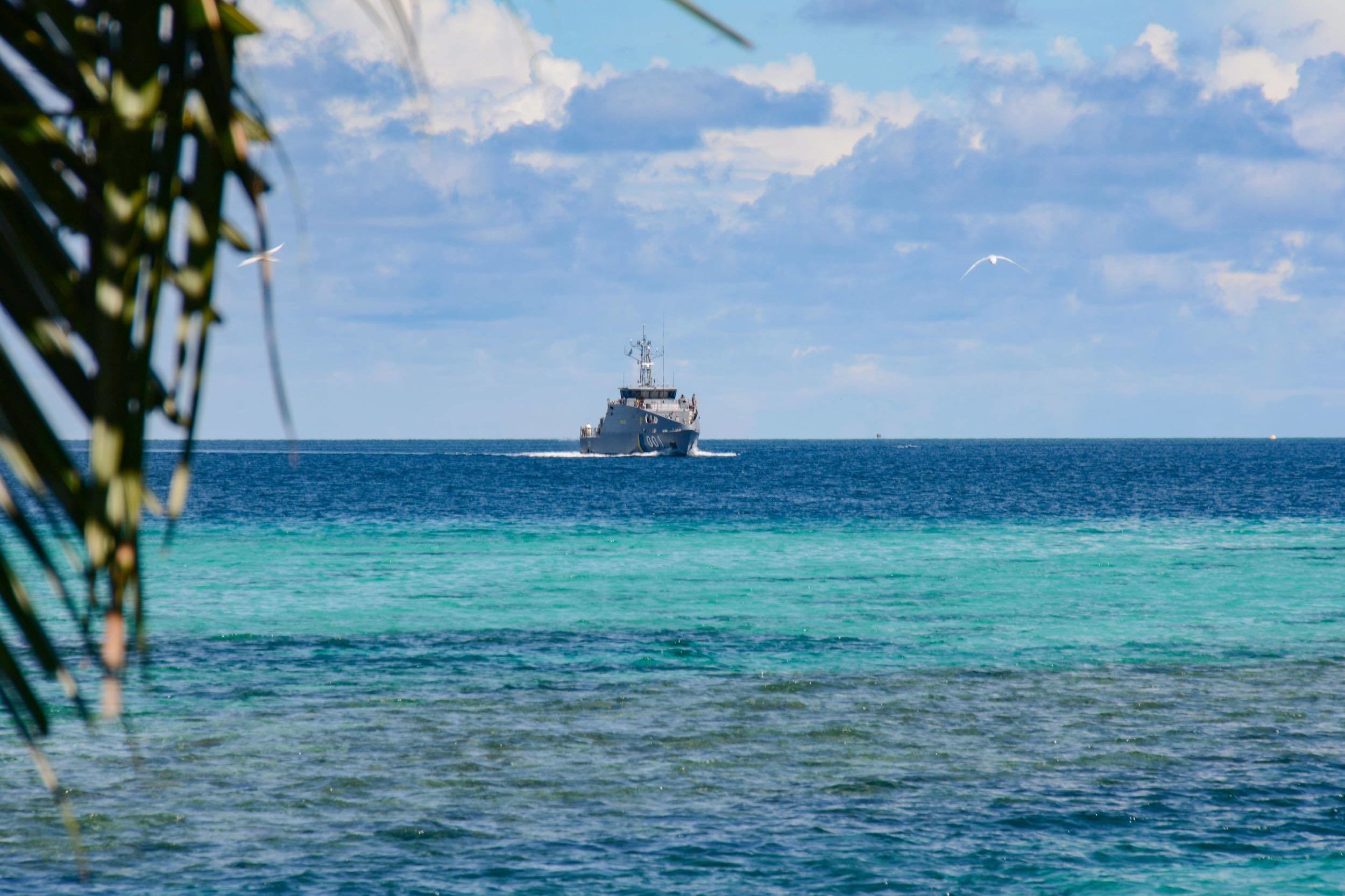eDNA: Bringing biodiversity to the surface
June 8, 2022 | Lilli Carlsen
On January 1, 2020 the Republic of Palau implemented one of the world's largest marine protected areas. Covering 80% of Palau’s exclusive economic zone, the Palau National Marine Sanctuary (PNMS) begins 24 nautical miles offshore and prohibits all extractive activities, like fishing and mining, within 183,000 square miles (475,077 square kilometers) of the ocean surrounding Palau. The PNMS demonstrates how the ambitious protection of marine resources can enable an island nation to ensure its food security and grow its economy in an era of tumultuous change in the climate and the ocean.
However, with large ambitions comes large obstacles. How can Palau evaluate the success of the PNMS? How will we know if it's working?
Environmental DNA (eDNA) offers unprecedented potential to monitor large-scale marine protected areas. eDNA is the cells, waste, viruses and microorganisms that plants and animals leave behind. Samples of marine eDNA provide a snapshot of the organisms that have recently passed through the water so scientists can assess the ecosystem's biodiversity and keep track of the types of species inhabiting certain areas of the ocean. Using this technology, we can discover more than just the plants and animals we see: We can keep track of all the organisms that live below the surface and get a better sense of everything we can’t see.
Center for Ocean Solutions (COS) Staff Scientist Collin Closek recently joined a team of scientists from the Palau International Coral Reef Center (PICRC) and officers from Palau's Division of Maritime Security and Fish & Wildlife Protection (also known as the Division of Marine Law Enforcement, or DMLE) on a research expedition to gather eDNA samples from sites across the PNMS. The goal of this field trip was to establish a baseline understanding of the biodiversity that is present in the sanctuary, starting with pelagic fish, and initiate a protocol for regular eDNA sampling throughout the PNMS. In the long run, they hope to build an eDNA monitoring program to gain meaningful scientific insights about biodiversity in Palauan waters and better understand the value of large-scale marine protected areas.
After one week at sea – waking up at dawn and filtering water throughout the night – scientists collected nearly 300 samples in and around the Palau National Marine Sanctuary.

Meet the Team: Left to right: McQuinnley “MQ” Mesengei (PICRC Research Assisstant), E. Ikelau Otto (PICRC Researcher), Collin Closek (COS Staff Scientist), Natalie Arnoldi (Stanford PhD Candidate), Captain Allison Baiei (DMLE), Louw Claassens (Science Officer and Researcher for the PNMS, PICRC)

The bridge of the PSS Remeliik II, crewed by DMLE officers, is the best vantage point from which to pilot the ship and observe the vastness of the open ocean. Typically DMLE runs surveillance and enforces the restrictions of the PNMS. This was their first time collaborating in scientific research in the PNMS.
After much planning and anticipation, Closek was excited as the vessel ventured out into the open ocean to enter the vast PNMS. Of course, there was always a possibility that this first trip could be a failure if the gear and machinery malfunctioned and the team would have to go back to the drawing board. On the flipside, however, the team spent months during lockdown meticulously planning this trip. In the end all that planning paid off. “When we got on board and started filtering samples on the ship, I was blown away by how confident and well-trained everyone was. It was a pleasant surprise given we only had a single two-hour training session to prepare,” said Closek.

Utilizing a Niskin bottle, the team collects water samples from the same depth at each station and transferred the seawater into sterile bottles to transport to the field lab.

The laundry room was the only space where the research team was able to set up their workbenches.

Out in the big blue, exploring the sanctuary. The PNMS is home to nearly 800 recorded animal species, including manta rays, many species of seabirds, whales, sharks, billfishes, hawksbill sea turtles and tunas.
“Being out on the water solidified why it is important to protect this space and why we are doing this work. The PNMS is truly unique and holds significant value for the people of Palau and the world,” recalls Closek. The importance of the PNMS for international marine conservation and for Palauan cultural preservation was on everyone’s mind as they cruised back to PICRC, satisfied with their ample collection of eDNA samples.
The team reunited in November 2021 and May 2022 for their second and third rounds of sampling. While the team has found their rhythm and established a solid protocol, this is just the beginning for the eDNA samples. Next, the team will send the samples to a laboratory for analysis where these small particles of DNA will yield big picture insights, illuminating the biodiversity that lives below the surface in the Palau National Marine Sanctuary.
Learn more about the Sustainable Ocean Economies eDNA Project
Follow Palau National Marine Sanctuary for more updates
Photos courtesy of Collin Closek, E. Ikelau Otto, McQuinnley Mesengei, and Louw Claassens





